Bone Density Testing Information for Professionals
Clinical Practice Guidelines for the Diagnosis and Management of Osteoporosis - Winnipeg Regional Health Authority
This document, based on the 2010 Clinical Practice Guidelines for the Diagnosis and Management of Osteoporosis in Canada, is designed to provide an evidence-based process to identify and treat osteoporosis.
- Definition of Osteoporosis
- Clinical Role of Bone Density Measurement
- University of Manitoba Osteoporosis Flowchart
- Anatomy of a Bone Density Report
- Explanation of a Bone Density Report
- Newsletters
Definition of Osteoporosis
The World Health Organization defines osteoporosis as "...a systemic skeletal disease characterized by low bone mass and microarchitectural deterioration of bone tissue, with a consequent increase in bone fragility and susceptibility to fracture".
For comparing rates of osteoporosis in different populations the following categorization was proposed by the WHO in 1994 based upon bone density expressed as a T-score (the number of standard deviations above or below average peak young-adult bone density):
| T score | WHO Category | Clinical Interpretation |
| <1 SD below average peak BMD | Normal | Non-osteoporotic |
| Between 1 and 2.5 SD below average peak BMD | Low bone density (osteopenia) | Non-osteoporotic |
| >2.5 SD below average peak BMD | Osteoporosis | Osteoporosis |
The WHO categorization is only applicable after menopause in women or age 50 in men. In premenopausal women, younger men and children Z-scores (based upon age- and sex-match comparisons) are reported.
Clinical Role of Bone Density Measurement
A distinction is made between diagnostic classification and the use of bone mineral density (BMD) for fracture risk assessment. Bone density is best thought of as risk factor for fracture rather than a diagnostic threshold. Understanding bone density as a risk factor means interpreting the value in light of other key information, such as age and previous fracture. A T score of -1.8 does not predict the same risk for a fracture in a 45 year old as it does in a 69 year old. The T-score captures only one aspect of fracture risk. In evaluating fracture risk, bone density should be considered in conjunction with other clinical risk factors for fracture. Important independent risk factors include low body weight, history of postmenopausal fracture, family history of fracture and poor neuromuscular function. Intervention should be based on fracture risk as determined by a combined assessment of BMD, age and other clinical risk factors for fracture. Treatment decisions should be based on fracture risk, not BMD alone.
Effective September 1st 2012, estimated absolute fracture risk (percent chance of having a major osteoporotic fracture over the next ten years) will be used to categorize fracture risk using the Canadian version of the World Health Organization (WHO) fracture risk assessment tool, called “FRAX” and can be accessed at: WHO Fracture Risk Assessment Tool for Canada (FRAX). This tool estimates a person’s 10-year fracture risk from the input of several risk factors: age, sex, body mass index, prolonged glucocorticoid use, current smoking, high alcohol intake, parental hip fracture, rheumatoid arthritis, prior fragility fracture and (optionally) femoral neck BMD. Although FRAX uses the femoral neck as the primary site for fracture risk estimation, the total hip site is still reported as the preferred site for hip BMD monitoring due to better precision. In Manitoba, we also modify the output of the FRAX tool with an adjustment for lumbar spine BMD (when lumbar spine T-score is 1 SD or more below the femoral neck T-score) and glucocorticoid dose (daily prednisone low, moderate, high). "Fracture risk" over the next 10 years is categorized using definitions similar to risk categories for cardiovascular disease:
| Fracture Risk | Definition |
| Low risk | <10% chance of an osteoporotic fracture |
| Medium risk | 10 - 19% chance of an osteoporotic fracture |
| High risk | > 20% chance of an osteoporotic fracture |
The Fracture Risk category above is modified in accordance with the “2010 Clinical practice guidelines for the diagnosis and management of osteoporosis in Canada”:
- Individuals with a diagnosis of osteoporosis (minimum T-score -2.5 or lower) are considered to be at the very least moderate risk;
- Individuals over age 50 years with a fragility fracture of the hip or vertebra, or those who have had more than 1 fragility fracture, are considered to be high risk for future fractures irrespective of BMD and fracture risk from FRAX.
Which patients need treatment?
Group 1: Women and men over age 50 years, if reported to be:
- High risk: Pharmacologic therapy should be offered;
- Moderate risk: This group requires a careful evaluation to identify vertebral fractures (e.g., spine x-rays) or additional clinical risk factors which may contribute to a decision to offer pharmacologic therapy;
- Low risk: These individuals usually do not require pharmacologic therapy. In general, lifestyle measures are sufficient for those at low fracture risk who do not have additional risk factors for rapid BMD loss.
Group 2: Women and men under age 50 years:
- Treatment considerations are complex and often benefit from consultation with a specialist.
Does treatment affect the risk category?
- When taken correctly, first line treatments for osteoporosis significantly reduce vertebral and non-vertebral fracture risk even when BMD values are unchanged. The FRAX tool does not take into account the risk reduction associated with effective pharmacologic therapy, and therefore the risk category will not change. Thus for a patient who is being treated, the reported risk category reflects the fracture risk that would be expected for a hypothetical patient who is identical to the one you requested a BMD on, but who is treatment-naıve.
Key points when reviewing BMD results:
- T-scores should not be used as a "stand-alone" result to guide management. Many factors affect fracture risk other than BMD (older age and previous fragility fractures are the most important). Patients can still be at high risk of fracturing with bones in the low bone density (osteopenic) or normal range (now grouped together as "non-osteoporotic"). Alternately, patients can have a relatively low risk of fracturing even with bones measured in the osteoporotic range (especially if they are relatively young and do not have other risk factors).
- Vertebral Fracture Assessment (VFA) is a procedure on bone densitometers that acquires a low dose lateral spine image for the purpose of vertebral fracture recognition. Vertebral fractures are associated with a five-fold increase in the risk of future fractures and are automatically considered “High Risk”. VFA will be done automatically according to predefined criteria and does not need to be ordered. VFA results are integrated into the BMD and Fracture Risk report.
University of Manitoba Osteoporosis Flowchart

Footnotes:
a BMD testing in individuals younger than age 50 can be considered when there are significant medical conditions or medications associated with osteoporosis. Treatment guidelines are not well defined and requires an individualized approach, bearing in mind that risk of fracture is usually low, while long term safety and efficacy of drug therapy is not well established.
b Other high-risk medication use (e.g., aromatase inhibitors for breast cancer, androgen deprivation for prostate cancer), parental hip fracture, high alcohol intake or current smoking, low body weight (< 60 kg) or major weight loss (>10% of weight at age 25)
c Definite non-traumatic vertebral fractures (>25% height loss with end-plate deformity) are associated with a 5-fold increased risk for recurrent vertebral fractures. Equivocal spine fractures are not strong indicators of osteoporosis.
d The major objective of follow-up testing is to identify individuals with continued BMD loss. The anti-fracture effect of treatment is not explained from the small change in BMD. Stable BMD is consistent with successful treatment.
Anatomy of a Bone Density Report
INTERPRETATION
|
Fracture
Risk: Moderate
|
|
Patient’s Risk:
Average Risk:
BMD Category:
|
Risk factors included: age, sex,
BMI, femoral neck T-score, spine T-score
15% 10-year
fracture risk for an average 70 year old female
Osteoporotic
|
|
RESULTS
|
|
|
Femoral Neck Left
|
BMD = |
0.920 g/cm2
-0.7
|
Total Hip Left
|
BMD = Comparison:
|
0.921 g/cm2
-0.7
No change from previous (BMD 0.904 g/cm2
in March 2008) but this remains a significant increase from baseline (BMD
0.830 g/cm2 in July 2001).
|
Spine L1-3
|
BMD = Comparison:
|
0.871 g/cm2
-2.5
No change from previous (BMD 0.834
g/cm2 in March 2008) with a significant increase from baseline (BMD 0.764
g/cm2 in July 2001).
|
VFA
|
No definite vertebral fractures are identified
|
|
COMMENTS
|
This patient's Fracture Risk is
"Moderate" based upon an osteoporotic BMD category despite a lower calculated
percent risk. Fracture risk reported above is for an untreated patient, and
does not reflect the expected reduction in fracture risk from effective anti-resorptive therapy.
|
|
Explanation of a Bone Density Report
Fracture
Risk:
|
Fracture Risk is based on the patient's 10-year
risk of major osteoporotic fracture (low <10%, moderate 10-19%, or high >20%) from WHO Fracture Risk Assessment Tool for Canada (FRAX) (see
above).
Patient's Risk is estimated from age, sex, body
mass index, prolonged glucocorticoid use, current
smoking, high alcohol intake, parental hip fracture, rheumatoid arthritis,
prior fragility fracture and femoral neck BMD.
Risk factors included is the list of positive risk factors
used in the FRAX calculation. (Note: Lumbar spine BMD contributes to the
calculation when lumbar spine T-score is 1 SD or more below the femoral neck
T-score. If femoral neck BMD cannot be measured then 10-year fracture risk is
estimated without BMD from clinical
risk factors alone.)
Average Risk is the 10-year osteoporotic
fractur e risk for an average person of the same age and sex.
|
|
Note: Fracture Risk is not estimated in
premenopausal women, men younger than age 50, or children.
|
|
|
BMD
Category:
|
Defined
from the BMD and age.
After
menopause in women or age >50 in men: non-osteoporotic (minimum T-score above -2.5) or osteoporotic (minimum T-score -2.5 or
lower).
Premenopausal
women, men younger than age 50, and children: normal for age (Z-score above -2.0) or reduced for age (Z-score -2.0 or lower).
|
Newsletters
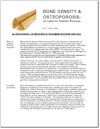 |
When is a Holiday Bad for Your Health?Bone Density & Osteoporosis: An Update for Manitoba Physicians |
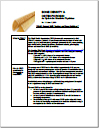 |
FRAX, Repeat BMD Testing and Drug HolidaysBone Density & Osteoporosis: An Update for Manitoba Physicians |
 |
FRAX and New BMD Reporting GuidelinesBone Density & Osteoporosis: An Update for Manitoba Physicians |
 |
Vitamin D Testing and ReplacementBone Density & Osteoporosis: An Update for Manitoba Physicians |
 |
Closing The Post Fracture Care Gap In ManitobaBone Density & Osteoporosis: An
Update for Manitoba Physicians |
 |
Bone Density Testing in Depo-Provera UsersBone Density & Osteoporosis: An
Update for Manitoba Physicians |
 |
Bone Density Testing – Making A Clean Break!Bone Density & Osteoporosis: An Update for Manitoba Physicians |
 |
Bone Density Testing In Manitoba – Big Changes Are Coming!Bone Density & Osteoporosis: An Update for Manitoba Physicians |
 |
Prevent Falls To Prevent FracturesBone Density & Osteoporosis: An Update for Manitoba Physicians |
 |
Osteoporosis – The Importance of Recognizing Vertebral FracturesBone Density & Osteoporosis: An
Update for Manitoba Physicians
|
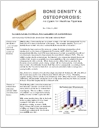 |
Clinical Risk Factors In The Assessment Of OsteoporosisBone Density & Osteoporosis: An Update for Manitoba Physicians |
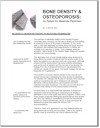 |
Bone Ultrasound Testing In Manitoba PharmaciesBone Density & Osteoporosis: An Update for Manitoba Physicians |
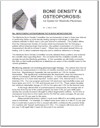 |
Monitoring Osteoporosis With Bone DensitometryBone Density & Osteoporosis: An Update for Manitoba Physicians |
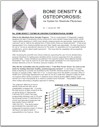 |
Bone Density Testing In Low-Risk Postmenopausal WomenBone Density & Osteoporosis: An Update for Manitoba Physicians |


